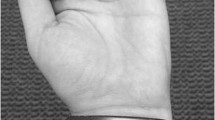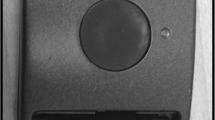Abstract
Biosensor systems are increasingly promoted for use in behavioral interventions. Portable biosensors might offer advancement over self-report use and can provide improved opportunity for detection and intervention in patients undergoing drug treatment programs. Fifteen participants wore a biosensor wristband capable of detecting multiple physiologic markers of sympathetic nervous system (SNS) arousal for 30 days. Urine drug screening and drug use self-report were obtained twice per week. A parameter trajectory description method was applied to capture abrupt changes in magnitude of three measures of SNS activity: Electrodermal activity (EDA), skin temperature and motion. Drug use events detected by the biosensor were verified using a triad of parameters: the biosensor data, urine drug screens, and patient self-report of substance use. Twelve positive cocaine urine screens were identified. Thirteen self-reported episodes of cocaine use were recorded. Distinct episodes with biometric parameters consistent with cocaine use were identified on biosensor data. Eleven potential cocaine use episodes were identified by biosensors that were missed by both self-report and drug screening. Study participants found mobile biosensors to be acceptable, and compliance with the protocol was high. Episodes of cocaine use, as measured by supraphysiologic changes in biophysiometric parameters, were detected by analysis of biosensor data in instances when self-report or drug screening or both failed. Biosensors have substantial potential in detecting substance abuse, in understanding the context of use in real time, and in evaluating the efficacy of behavioral interventions for drug abuse.





Similar content being viewed by others
References
Boyer, E. W., Smelson, D., Fletcher, R., Ziedonis, D., and Picard, R. W., Wireless technologies, ubiquitous computing and mobile health: Application to drug abuse treatment and compliance with HIV therapies. J. Med. Toxicol. 6(2):212–216, 2010. doi:10.1007/s13181-010-0080-z.
Boyer, E. W., Fletcher, R., Fay, R. J., Smelson, D., Ziedonis, D., and Picard, R. W., Preliminary efforts directed toward the detection of craving of illicit substances: The iHeal project. J. Med. Toxicol. 8(1):5–9, 2012. doi:10.1007/s13181-011-0200-4.
Fletcher, R. R., Tam, S., Omojola, O., Redemske, R., and Kwan, J., Wearable sensor platform and mobile application for use in cognitive behavioral therapy for drug addiction and PTSD. 1–4, 2011.
Healey, J. A., and Picard, R. W., Detecting stress during real-world driving tasks using physiological sensors. Intell. Transp. Syst. 2005. doi:10.1109/TITS.2005.848368.
Poh, M.-Z., Loddenkemper, T., Reinsberger, C., et al., Convulsive seizure detection using a wrist-worn electrodermal activity and accelerometry biosensor. Epilepsia 53(5):e93–e97, 2012. doi:10.1111/j.1528-1167.2012.03444.x.
Lee, J. L. C., Milton, A. L., and Everitt, B. J., Cue-induced cocaine seeking and relapse are reduced by disruption of drug memory reconsolidation. J. Neurosci. 26(22):5881–5887, 2006. doi:10.1523/JNEUROSCI.0323-06.2006.
Gawin, F. H., and Kleber, H. D., Abstinence symptomatology and psychiatric diagnosis in cocaine abusers: Clinical observations. Arch. Gen. Psychiatry 43(2):107–113, 1986. doi:10.1001/archpsyc.1986.01800020013003.
Kampman, K. M., New medications for the treatment of cocaine dependence. Psychiatry (Edgmont), 2005.
O’Brien, C. P., Childress, A. R., Ehrman, R., and Robbins, S. J., Conditioning factors in drug abuse: Can they explain compulsion? J. Psychopharmacol. 12(1):15–22, 1998. doi:10.1177/026988119801200103.
Charkoudian, N., and Wallin, B. G., Sympathetic neural activity to the cardiovascular system: Integrator of systemic physiology and interindividual characteristics. Compr. Physiol. 4(2):825–850, 2014. doi:10.1002/cphy.c130038.
Picard, R. W., Fedor, S., and Ayzenberg, Y., Multiple arousal theory and daily-life electrodermal activity asymmetry. Emot. Rev., 2014.
Vongpatanasin, W., Mansour, Y., and Chavoshan, B., Cocaine stimulates the human cardiovascular system via a central mechanism of action. Circulation, 1999. doi:10.1161/01.CIR.100.5.497.
Poh, M.-Z., Swenson, N. C., and Picard, R. W., A wearable sensor for unobtrusive, long-term assessment of electrodermal activity. IEEE Trans. Biomed. Eng. 57(5):1243–1252. doi:10.1109/TBME.2009.2038487.
Carreiro, S., Smelson, D., Ranney, M., et al., Real-time mobile detection of drug use with wearable biosensors: A pilot study. J. Med. Toxicol. 1–7, 2014. doi:10.1007/s13181-014-0439-7.
Fang, H., Johnson, C., Stopp, C., and Espy, K. A., A new look at quantifying tobacco exposure during pregnancy using fuzzy clustering. Neurotoxicol. Teratol. 33(1):155–165, 2011. doi:10.1016/j.ntt.2010.08.003.
Fang, H., Rizzo, M. L., Wang, H., Espy, K. A., and Wang, Z., A new nonlinear classifier with a penalized signed fuzzy measure using effective genetic algorithm. Pattern Recognit. 43(4):1393–1401, 2010. doi:10.1016/j.patcog.2009.10.006.
Fang, H., Dukic, V., Pickett, K. E., Wakschlag, L., and Espy, K. A., Detecting graded exposure effects: A report on an East Boston pregnancy cohort. Nicotine Tob. Res. 14(9):1115–1120, 2012. doi:10.1093/ntr/ntr272.
Acknowledgments
This project was funded by National Institute on Drug Abuse, National Institute of Health (NIH) grants R01DA033769-01, 1R01DA033323-01, and NIH National Center for Advancing Translational Sciences 5UL1TR000161-04 pilot study award.
Author information
Authors and Affiliations
Corresponding author
Additional information
This article is part of the Topical Collection on Mobile Systems
Rights and permissions
About this article
Cite this article
Carreiro, S., Fang, H., Zhang, J. et al. iMStrong: Deployment of a Biosensor System to Detect Cocaine Use. J Med Syst 39, 186 (2015). https://doi.org/10.1007/s10916-015-0337-9
Received:
Accepted:
Published:
DOI: https://doi.org/10.1007/s10916-015-0337-9




